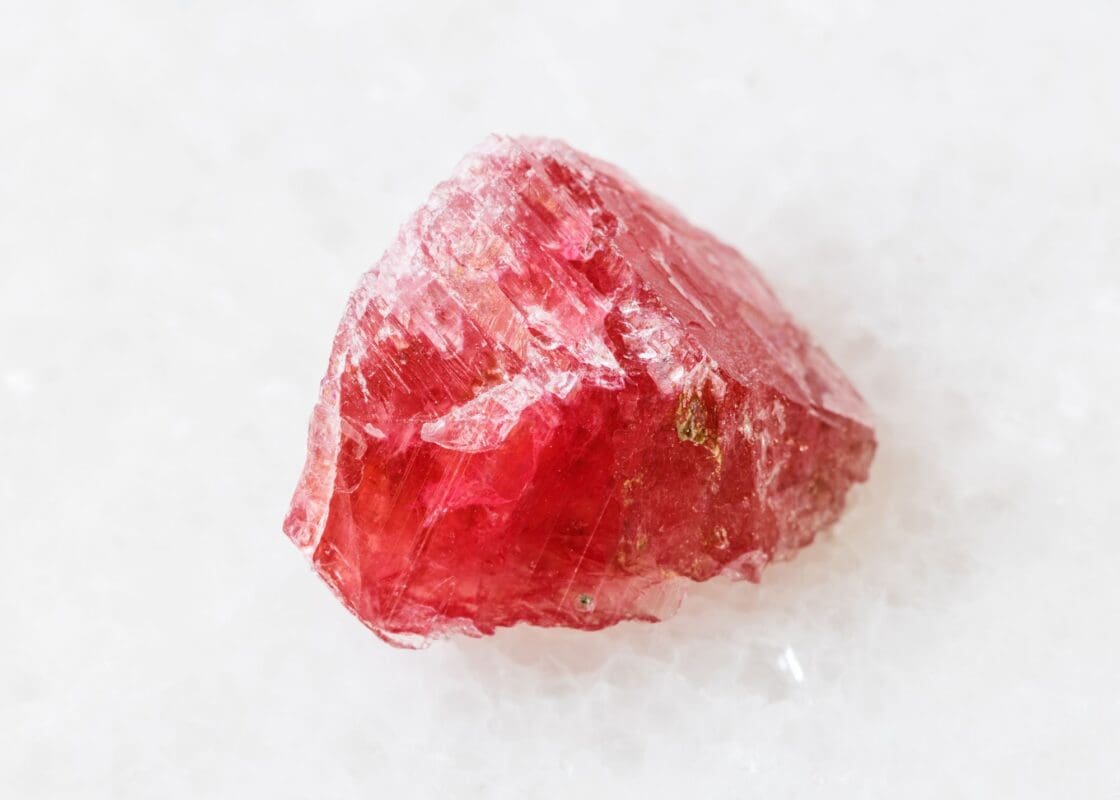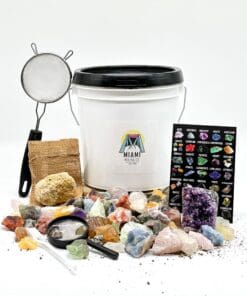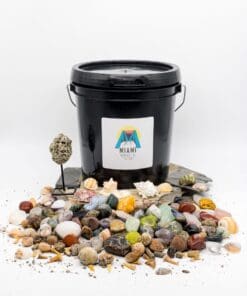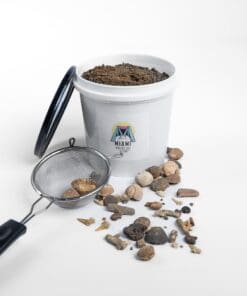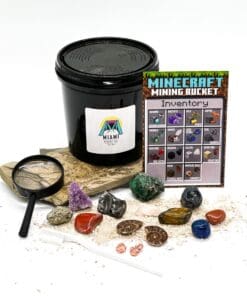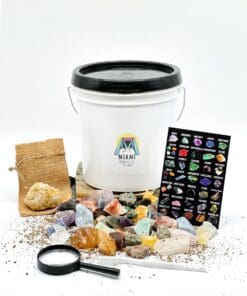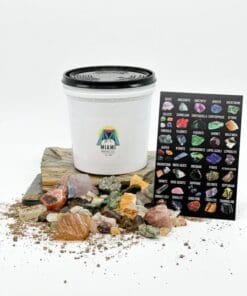Massachusetts Gem Mining: The Complete Gem Mining Exploration Guide
The state of Massachusetts, known for its rich history, also possesses a fascinating legacy in the world of gemstones. Gem mining in Massachusetts has been a pastime for both professional miners and hobbyists alike. This article sheds light on the sparkling allure of the Bay State’s gemstones, from the popular stones found to notable historical finds.
The Most Popular Gemstones in Massachusetts
Massachusetts, though not as popularly known as some Western states for its gems, has a diverse range of both common and rare gemstones. Below are tables highlighting these:
Rare Gemstones Found in Massachusetts:
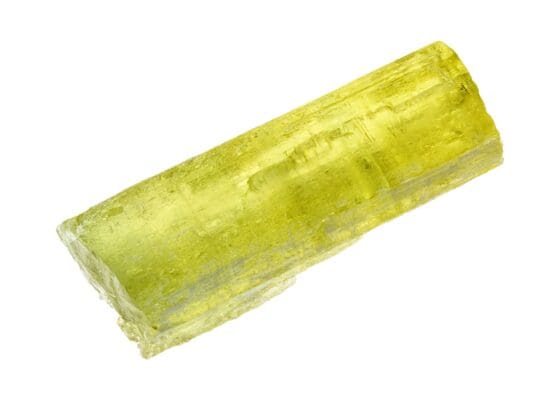
| Gemstone | Short Description |
|---|---|
| Aquamarine | A blue-green variety of beryl; sought after for its stunning clarity and color. |
| Golden Beryl | A yellow-green cousin of aquamarine, often used in unique jewelry pieces. |
| Cranberry Garnet | Named for its deep red hue; rarer and more vibrant than typical garnets. |
| Tourmaline (Elbaite) | A multicolored gem that can exhibit a wide spectrum of colors in a single crystal. |
| Rhodonite | Pink to red in color; Massachusetts’s state gem, primarily found in the state. |
Common Gemstones Found in Massachusetts:
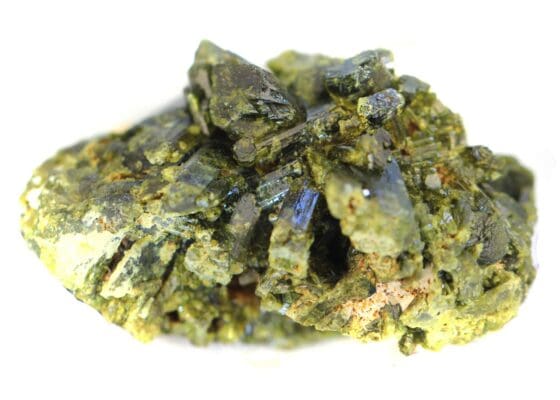
| Gemstone | Short Description |
|---|---|
| Smoky Quartz | Gray to brown quartz variety, often found in large crystals in Massachusetts. |
| Almandine | A type of garnet; deep-red to brownish-red, frequently used as an abrasive. |
| Microcline | A mineral of the feldspar group, often with a blue-green tint. |
| Epidote | Green to black in color, known for its pistachio-green crystals. |
| Graphite | Known for its use in pencils, this mineral appears as dark, shiny flecks. |
| Schorl | A black variety of tourmaline, often found in metamorphic rocks. |
| Lepidolite | A lilac-gray or rose-colored member of the mica group and a source of lithium. |
| Chrysotile | A variety of asbestos and usually appears as white, fibrous masses. |
| Talc | Softest mineral on the Mohs scale; used in various industries, including cosmetics. |
| Actinolite | Often appears as thin, green needles and is commonly found in metamorphic rocks. |
While this list covers many of the gemstones you may come across in Massachusetts, always keep an eye out for unique or unfamiliar specimens, as the thrill of discovery is a core aspect of gem mining.
Top Gem Mining Locations in Massachusetts

- Graves Mountain, Littleton: A gem hunter’s favorite, especially for those searching for garnets. This mountain has been a staple for gem enthusiasts for decades. While the operating hours vary by season, it’s generally open from dawn to dusk. A modest entry fee is charged, though group discounts are often available.
- Albany Slip Clay Pit, Western Massachusetts: A haven for those seeking beryl, this site boasts significant deposits. It operates mainly from spring to fall, 8 am to 6 pm. There is a small fee which covers all-day access.
- Rice’s Quarry, Bolton: Offering a mix of quartz, feldspar, and mica, this quarry is a dream for diversifying collections. It’s open on weekends, 9 am to 5 pm, from April through October. The entrance fee is based on age, with discounts for children.
- Barton Garnet Mine, North Adams: As the name suggests, this site is a prime location for garnets. Open daily from 9:30 am to 5 pm during the summer months, it has an entrance fee that includes a guided tour.
- King Philips Mine, North Attleboro: This old copper mine occasionally yields some impressive gemstones, including tourmalines. It’s open from dawn to dusk all year round with no entry fee, but you might want to check local regulations before heading out.
- Bowers Quarry, Westford: This quarry is popular among locals for its deposits of smoky quartz. Operating hours are typically from 8 am to 5 pm during weekends in the warmer months. There’s a per-pound fee for the stones you collect.
- Dexter’s Jade Quarry, Middlesex County: A rather rare site where you can find New England nephrite jade. Open only on select weekends from June to August, 10 am to 4 pm. The fee structure is per visit and includes basic tools.
- Moxie Plume Agate Field, Berkshire County: For those chasing the elusive agate, this is your go-to spot in Massachusetts. It’s open daily from 8 am to 7 pm in summer. Pricing is per pound of material collected.
- Smith’s Pegmatite Quarry, Chesterfield: Known for its deposits of lepidolite, beryl, and even some garnets. The quarry is open from dawn to dusk, weekends only, from April to September. A day pass fee applies.
- Ames Mine, Greenfield: This location is notable for its variety, especially for quartz enthusiasts. Access is generally from 9 am to 6 pm daily during the summer. The site charges a modest entry fee.
It’s always a good practice to contact individual mining sites ahead of your visit for the most up-to-date information on operating hours, fees, and guidelines. Happy hunting!
History of Gem Mining in Massachusetts
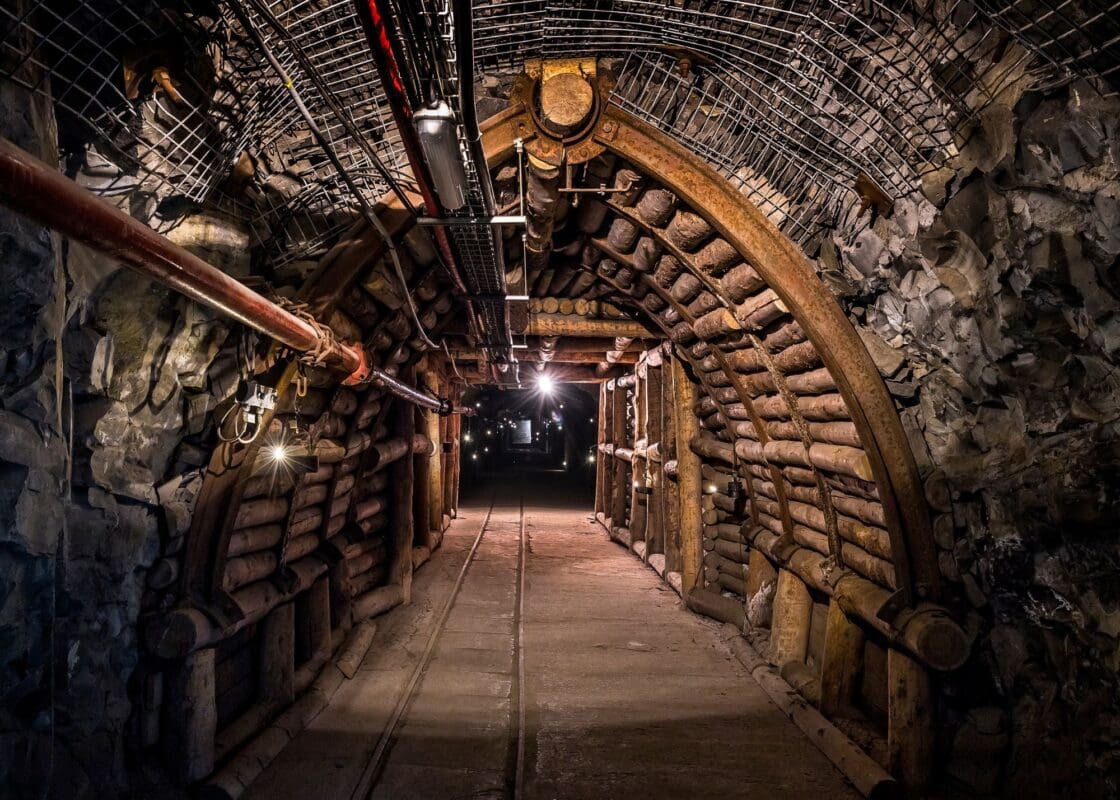
The story of gem mining in Massachusetts is a tapestry of hope, perseverance, and chance discoveries, interwoven with the state’s broader historical narrative. The state’s geological profile, rich with an array of minerals, has made Massachusetts a notable location for gem enthusiasts and professional miners alike.
Gem mining in Massachusetts traces its origins to the 18th century, though the practice gained significant momentum during the 19th century. The growth was not solely spurred by the allure of gemstones but was initially intertwined with the architectural stone industry. Quarries were dug to extract valuable stone for building purposes, and to the astonishment of many, these quarries occasionally revealed sparkling gems as byproducts. It was these incidental discoveries that gradually shifted attention to the potential wealth in gemstones.
The town of Russell, for instance, became a hub for miners following reports of garnet discoveries in the late 1800s. Similarly, Albany Slip Clay Pit, a site originally intended for extracting clay, soon became known for its abundant reserves of beryl.
The 20th century saw the rise of recreational gem mining as a popular hobby. Families began to frequent known gem sites during weekends, with the dual aim of seeking treasure and enjoying the Massachusetts outdoors. This trend turned many former industrial sites into recreational mining spots, breathing new life into areas that might have otherwise been forgotten.
As the state transitioned from an industrial era to a more technological age, gem mining transformed as well. Today, it serves as a bridge between Massachusetts’s industrial past and its nature-centric present. The history of gem mining is not just a chronicle of the quest for beautiful stones but a testament to the adaptability and resilience of a state and its people.
For those who venture into the state’s gem sites today, each find is not just a piece of mineral, but a fragment of a rich, dynamic, and enduring legacy.
Gem Mining Regulations in Massachusetts

The legacy of Massachusetts isn’t just rooted in its rich history, storied educational institutions, and breathtaking landscapes; it’s also enshrined in the very ground beneath our feet, where a kaleidoscope of gemstones awaits discovery. Yet, as with all treasures, there are rules to ensure their responsible extraction. If you’re a budding gem hunter in the Bay State, understanding these regulations is paramount.
First and foremost is the respect for land rights. The foundation of Massachusetts’s gem mining regulations lies in property rights. Essentially, the minerals beneath the land belong to whoever owns the surface rights. This means before any mining activity on private property, explicit permission from the landowner is an absolute necessity. Not only does this ensure you’re on the right side of the law, but it fosters mutual respect between landowners and miners.
For public lands, the scenario is a tad different. While the federal mandate prohibits mineral collection in national parks to preserve their pristine nature, state parks and forests have their own tailored regulations. Aspiring gem miners should consult local park authorities for specific guidelines. Many of these areas operate under the “leave no trace” principle, emphasizing minimal disruption to the environment and urging visitors to pack out whatever they bring in.
Furthermore, while Massachusetts is generally supportive of recreational gem hunting, there are restrictions on the volume one can extract. These measures ensure sustainable gem mining practices and guarantee that future enthusiasts will still find the thrill of discovery alive and well.
Safety, understandably, remains paramount in the regulatory framework. Given the inherent risks in mining areas—be it from falling rocks, sudden pits, or unstable terrains—certain regions have restricted access. Where access is granted, the use of protective gear, such as helmets, gloves, and safety goggles, might be mandatory.
Environmental conservation is another pillar of Massachusetts’s gem mining ethos. Activities that may be detrimental to local ecosystems, like deploying heavy machinery or harmful chemicals, are typically restricted or outright prohibited. This intertwining of gem mining with ecological responsibility showcases Massachusetts’s commitment to a greener future.
In conclusion, while Massachusetts opens its arms to those eager to unearth its hidden gemstones, it’s a privilege that comes with its share of responsibilities. Adherence to regulations ensures that this fascinating pursuit can be enjoyed sustainably and safely, marrying the past’s treasures with the future’s promise.
Necessary Tools and Equipment for Gem Mining in Massachusetts
Diving into the world of gem mining in Massachusetts is an enthralling journey, one that combines the thrill of discovery with the serenity of nature. But like any expedition, proper preparation and equipment can make all the difference in your experience. Ensuring you have the right tools not only increases your chances of unearthing hidden treasures but also guarantees your safety and the preservation of the environment.
1. Screening and Classifying Tools: Reveal those hidden treasures!
Description: Given that many gemstones might be embedded within loose soil or gravel, a set of sifting screens can help you separate potential treasures from the mundane. These come in varying mesh sizes, allowing for meticulous sorting.

🛒 Explore Top Screening Sets on Amazon
2. Shovels and Trowels: Digging deep or just scratching the surface?
Description: For digging into softer soils or clearing away surface debris, a sturdy hand shovel or trowel is indispensable. It aids in unearthing potential gem-containing substrates.

🛒 Find Quality Shovels and Trowels on Amazon
3. Picks and Hammers: The backbone of any gem hunting endeavor.
Description: These are a gem hunter’s best friends. A rock hammer allows you to break away at hard rocks, revealing potential gems inside, while chisels, especially those with a pointed tip, help in more precise extractions.

🛒 Check Out Best Picks and Hammers on Amazon
4. Buckets: Your trusted companion for carrying treasures.
Description: These are essential for collecting soil or gravel samples from potential hotspots. A durable bucket and a sturdy shovel are indispensable, especially in locations where gems are found in sediment layers.

🛒 Shop for Reliable Buckets on Amazon
5. Magnifying Glass: Every detail counts!
Description: This magnifying tool aids in examining your finds up close. Identifying inclusions, clarity, and other details becomes much more manageable with a loupe.

🛒 Grab Your Magnifying Glass on Amazon
6. Guidebooks and Field Guides: Knowledge at your fingertips.
Description: A comprehensive field guide can be invaluable, helping you identify potential gemstones and offering insights into where they might commonly be found. Such a guide can transform a novice into an informed gem hunter.

🛒 Discover the Best Field Guides on Amazon
7. Containers and Bags: Organize, store, and flaunt your finds.
Description: Once you’ve found your gems, safe storage is crucial. Small plastic containers or fabric pouches can keep your treasures secure and prevent them from scratching or damaging each other.

🛒 Shop for Storage Solutions on Amazon
8. First Aid Kit: Better safe than sorry!
Description: The rugged terrain of mining sites can pose unexpected challenges. It’s always wise to carry a basic first aid kit, equipped with bandages, antiseptics, and other essentials.

🛒 Secure Your First Aid Kit on Amazon
To sum up, while the allure of gem mining lies in its unpredictability, having the right tools ensures that you’re well-equipped to meet the surprises head-on. Happy hunting, and may Massachusetts’s terrains reveal their sparkling secrets to you!
Tips and Tricks for Successful Gem Mining in Massachusetts

Embarking on a gem mining adventure in Massachusetts is a rewarding experience that intertwines the excitement of the hunt with the splendors of nature. However, even in this age-old pursuit, there are strategies to enhance your chances of success and make your journey more fruitful and enjoyable. Here are some insights to guide you on your quest:
- Research and Planning: Not all gem sites yield the same treasures. Begin your trip by researching which gems you’re most interested in and then target areas known for those particular finds. Websites, local geological societies, and guidebooks can be invaluable resources.
- Start Early: Many gem mining sites are in remote areas. Starting your day early not only maximizes your mining time but also allows you to take advantage of the cooler morning temperatures.
- Join a Guided Tour: Especially for beginners, guided tours can provide a comprehensive introduction to the world of gem mining. Local experts often share specialized knowledge, secret spots, and techniques that can vastly improve your success rate.
- Observe the Environment: Sometimes, the lay of the land can provide clues. For instance, areas where water runoff collects can be rich in minerals. Over time, rain can wash gemstones into small crevices or low-lying areas.
- Practice Patience: Gem hunting is as much about patience as it is about technique. Some days might be bountiful, while others may offer little. Remember, it’s the thrill of the hunt and the potential for that next big find that keeps the passion alive.
- Stay Hydrated and Protected: Gem sites can be exposed to the elements. Bring plenty of water, wear sunscreen, and consider wearing a hat and long sleeves to protect against the sun.
- Respect the Land: Always fill in any holes you dig and pack out any trash. Leaving a site better than you found it ensures that others can enjoy the experience too.
- Network with Fellow Enthusiasts: Engaging with fellow gem hunters can be enlightening. They might share recent finds, offer advice, or even introduce you to new locations.
- Stay Informed on Regulations: As you journey from one site to another, always be aware of the specific regulations pertaining to each area. Adherence ensures you mine responsibly and ethically.
- Trust Your Instincts: Sometimes, a hunch can lead to a significant discovery. While knowledge and technique are essential, occasionally letting your intuition guide you can be just as rewarding.
In conclusion, gem mining in Massachusetts is a blend of skill, strategy, and serendipity. Armed with these tips and an adventurous spirit, you’re well on your way to unearthing the hidden treasures of the Bay State. Happy hunting!
Handling Your Gemstone Finds
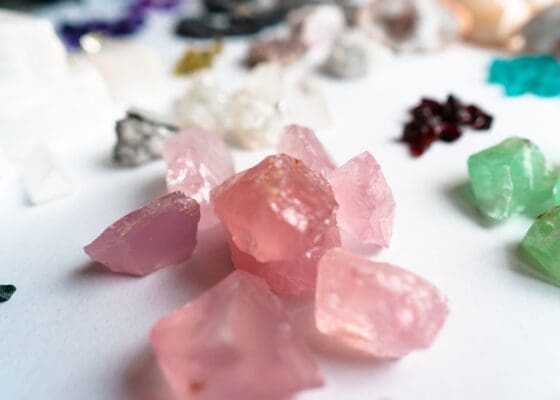
The thrill of discovery, that exhilarating moment when you unearth a shimmering gemstone, is undoubtedly the pinnacle of any gem mining expedition in Massachusetts. However, the journey doesn’t end there. Properly handling, cleaning, and storing your finds is crucial to showcase their natural beauty and preserve their value. Here’s a comprehensive guide to caring for your gemstone treasures:
- Immediate Cleaning: Start by removing loose dirt using a soft brush. This initial step ensures you’re not grinding any surface dirt into the stone, which can cause scratches.
- Soaking: Place your gemstones in a bowl of warm soapy water. This softens any encrusted dirt or clay. Avoid using harsh chemicals or boiling water, as this can damage some gemstones.
- Gentle Scrubbing: After soaking, gently scrub the gemstones with a soft toothbrush. This helps in dislodging any remaining dirt without scratching the surface.
- Rinsing: Thoroughly rinse the gemstones under cool running water to remove any soap residue. It’s essential to ensure that no soap remains, as it can leave a film on the gem, diminishing its natural shine.
- Drying: Pat your gemstones dry with a soft cloth. Allow them to air dry completely before storing to prevent any moisture-related damage.
- Storage: Store each gemstone separately, preferably in individual soft pouches or padded jewelry boxes. This prevents them from scratching against each other. Keeping them in a cool, dry place also helps in preserving their luster.
- Identification: Especially for beginners, identifying your finds can be a rewarding next step. Invest in a good gemstone guide or consider consulting with a local gemologist to learn more about your treasures.
- Valuation: If you believe you’ve stumbled upon a particularly valuable gem, it might be worth getting it appraised. A certified gemologist can provide an accurate value and even offer insights into potential enhancements or cutting to maximize its worth.
- Display: For those proud of their finds, consider creating a dedicated display space. Properly lit display cases or shadow boxes can significantly enhance the beauty of your gemstones.
- Maintenance: Over time, even stored gemstones can accumulate dust. Regularly check, clean, and ensure they maintain their brilliance.
In essence, the journey of a gemstone from the heart of Massachusetts’s earth to a place of pride in your collection is one of care and reverence. By following these steps, you ensure that the beauty and value of your finds remain undiminished, ready to be admired and cherished for generations to come.
Famous Gemstone Finds in Massachusetts
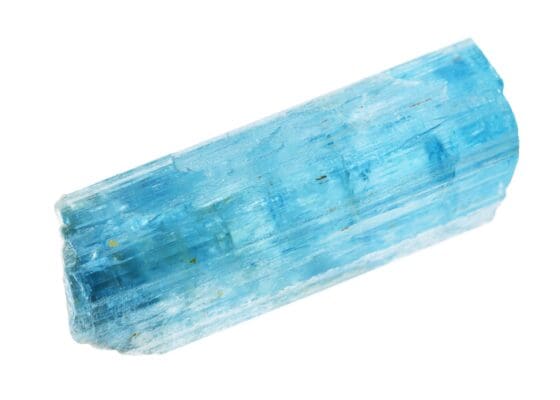
Massachusetts, with its rich geological tapestry, has been the backdrop for numerous significant gemstone discoveries. These finds have not only propelled the state into the limelight within mineralogical circles but have also spun captivating tales of serendipity, dedication, and awe. Here’s a delve into some of the most notable gemstone finds in the Bay State’s history:
- The Adams Ruby: Nestled within the rugged terrains of Western Massachusetts, an unsuspecting prospector stumbled upon a ruby that would soon be christened the “Adams Ruby.” This gem, weighing over 20 carats, quickly became renowned for its mesmerizing deep red hue and near-perfect clarity. Today, it holds a place of honor in global gem collections.
- Berkshire Aquamarine: The Berkshire Mountains have yielded many treasures, but none as breathtaking as the Berkshire Aquamarine. This gem, notable for its crisp blue-green coloration, showcased the latent potential of Massachusetts’s terrains and fueled further explorations.
- The Greenfield Emerald: In a serendipitous turn of events, a schoolchild in Greenfield chanced upon an emerald that would set gemological circles abuzz. This gem, with its vibrant green color, served as a testament to the hidden riches beneath Massachusetts’s soil.
- Chester Blue Quartz: Discovered in the quaint town of Chester, this unique blue quartz’s mesmerizing hue has made it a sought-after specimen for collectors and jewelry makers alike.
- The Plymouth Garnet: In the historic grounds of Plymouth, a sizable garnet was discovered, captivating onlookers with its deep red allure. This find reinforced Massachusetts’s standing as a fertile ground for precious gemstones.
- Worcester Tourmaline: Hailing from the outskirts of Worcester, a tourmaline crystal cluster was unearthed, displaying a stunning array of colors from verdant green to a deep, inky black.
Beyond the individual gems, what makes these discoveries truly magical are the stories accompanying them. From chance encounters to dedicated searches, each narrative is interwoven with passion, perseverance, and the indomitable spirit of discovery. These famed gemstones serve as an inspiration to both seasoned and budding gem hunters, underscoring the belief that the next big discovery might just be a stone’s throw away. Each find, whether large or small, contributes to the rich tapestry of Massachusetts’s gemological history, promising a legacy that will shine bright for ages to come.
Additional Gem Mining Opportunities
For those who’ve caught the gem mining bug in Massachusetts and are eager to extend their adventures, the neighboring states offer a plethora of opportunities, each with its unique geological offerings:
- Connecticut Gem Mining: Delve into Connecticut’s diverse terrains, where garnets, tourmalines, and beryl can be found, especially in the state’s ancient pegmatite formations.
- Rhode Island Gem Mining: Though the smallest state, Rhode Island boasts of beautiful amethysts, garnets, and even the occasional diamond in its riverbeds and old mining sites.
- New Hampshire Gem Mining: New Hampshire, renowned for its smoky quartz and aquamarine, offers enthusiasts a rich hunting ground, particularly in the White Mountains region.
- New York Gem Mining: Venturing slightly farther, New York provides a vast expanse of gem mining opportunities, from Herkimer diamonds to garnets in the Adirondacks.
- Vermont Gem Mining: The Green Mountain State is known for its grossular garnet, and its lush landscapes hide treasures like beryl and quartz.
Exploring the gemological treasures in these neighboring states can be as rewarding as the adventures in Massachusetts. Each state holds its unique stories, geological wonders, and the promise of unforgettable discoveries. Whether you’re a seasoned miner or a curious beginner, the Northeast is a gem-laden paradise waiting to be explored.
Explore the best gem mining locations and tips in our all-encompassing Gem Mining Near Me guide.
The Enchantment of Gem Hunting and At-Home Adventures
Gem hunting in Massachusetts weaves together the exhilarating thrill of discovery with the natural beauty of the state’s varied landscapes. Every grain of soil and rock holds the potential for uncovering hidden treasures, connecting adventurers to the ancient geological stories of the Bay State. Whether it’s the shimmering allure of a freshly unearthed gem or the captivating tales of historic finds, Massachusetts offers a gemological journey unlike any other.
However, for those who can’t always embark on outdoor adventures or are looking for a unique way to introduce the world of gemology to the younger generation, there’s an enchanting alternative: a Gem Mining Kit. This kit allows enthusiasts to experience the excitement of discovery right in the comfort of their homes. Packed with an array of gemstones waiting to be unearthed, it’s a perfect blend of education, entertainment, and the timeless charm of treasure hunting. Whether in the vast expanses of Massachusetts or at your kitchen table, the magic of gem hunting endures.

